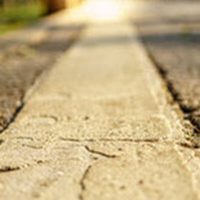Falling on Hazardous Sidewalks

The Palm Beach Post has an interesting story about the unexpected hazards created by mandatory oak or mahogany trees planted along sidewalks. Almost 30 years ago, the County decided that all developers should install these trees to provide canopy and other benefits. The trees were required to be planted within 10 feet of the curb. Unfortunately, the trees’ roots have upended the sidewalk, making it very dangerous for pedestrians to travel by foot. Even worse, the trees drop large seeds, which can also upend a pedestrian who is not looking for them.
Now, many communities are removing their trees—and paying large sums to contractors to get the job done. For example, Buena Vida is removing over 1,000 trees, while Valencia Palms has removed about 800. Many communities west of Delray Beach are considering removal, even though there is strong local support for keeping them.
Roots Are a Trip Hazard
The roots for the mahogany and oak trees started to push up from the ground about 15 years after being planted. Roots are so strong that they can crumble asphalt, and they can easily upend cobblestone or other stones. Pedestrians can trip or slip on pieces of the sidewalk. They might even trip on the roots themselves if they push up far enough from the ground.
Trees that drop large seeds also create a fall hazard, since it is easy to lose ones balance when stepping on them. Many homeowners associations that required the planting of trees now facing multiple trip-and-fall lawsuits as a result.
Fixing a Damaged Sidewalk
When a sidewalk crumbles, there is often a legal dispute about who must pay for the necessary repairs, which are not cheap. Homeowners can spend over $1,000 to fix a sidewalk, and additional repairs might be needed going forward unless the tree is removed. Root barriers are a temporary fix, since the roots can eventually find a way around them.
If you live in a HOA, check with the board. Some residents have had to sue their HOA to get paid for sidewalk repairs. Generally, the City of Delray Beach Operations is responsible for sidewalk maintenance, and you should report a dangerous sidewalk directly to them.
Obtaining Compensation after a Fall
If you fell on a sidewalk, you should take the same steps you would if you fell inside a store. First, photograph the hazard, in this case the root or raised pavement that caused you to trip.
Next, Get the address nearest to the sidewalk. This helps us find the dangerous sidewalk, who might need to visit the scene.
You should also identify witnesses, such as other people on the sidewalk or the person you were walking with. Obtain their names and contact information so that your attorney can speak with them, if necessary.
Do not hesitate to go to the doctor or hospital, even if you feel okay. You could easily have suffered a soft-tissue injury, fracture, or concussion. Some injuries take a little while before they fully manifest but getting to the doctor is key.
Finally, contact a lawyer at Earnhart Law. Our Delray Beach premises liability attorneys can help you obtain compensation for your injuries. Call us at 561-265-2220 to schedule a free consultation.
Resource:
palmbeachpost.com/story/news/2020/10/09/oak-trees-root-hazardous-sidewalks-and-neighborhood-battles/5924493002/
